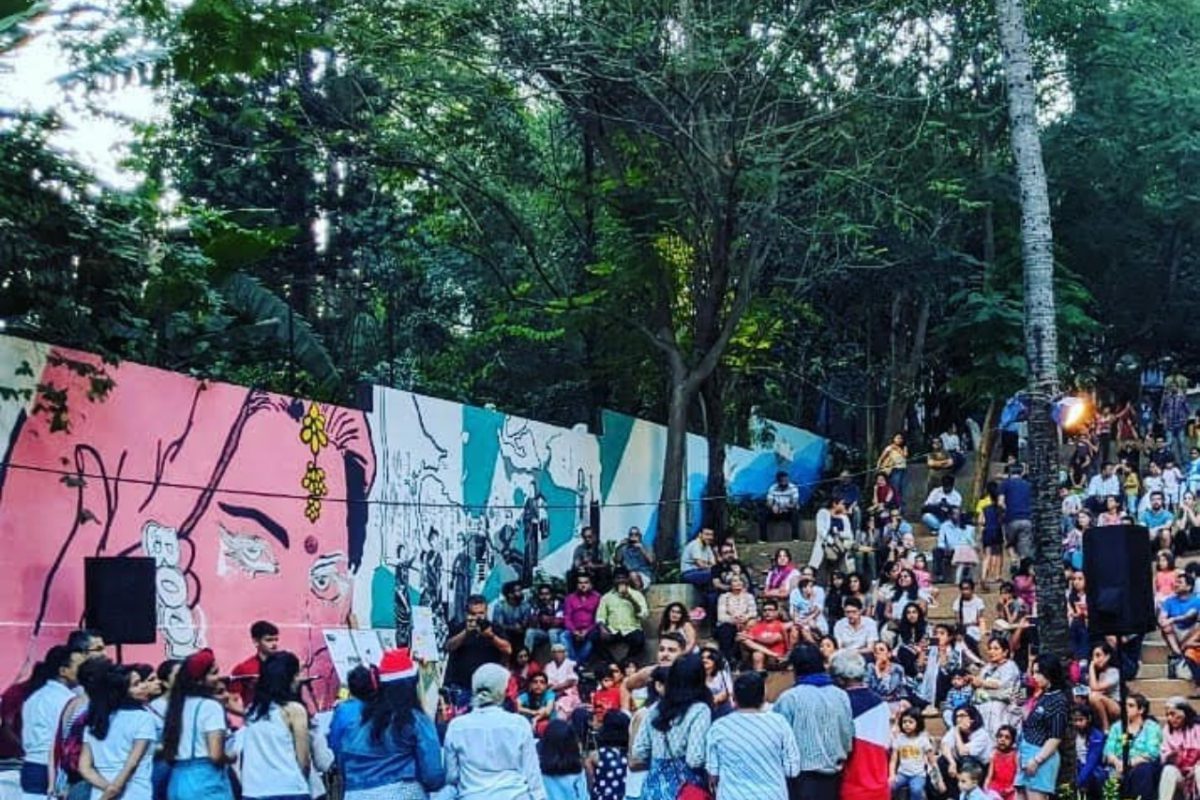
Keep up with our latest news and projects!

In 2012, Anca Abraham and her husband Alan, discontented with Mumbai’s poorly connected open spaces and inadequate infrastructure, founded Bombay Greenway: a series of urban planning and placemaking interventions across the city. In 2018, her friend Tina Nandi had found herself secretly plotting ways to persuade her husband to move to a more ‘liveable’ part of the world. But she was inspired by the efforts of the Bombay Greenway, and together with Anca, began brainstorming ways to put her own skills to use for the city.
As mothers to young children, they decided a good place to start would be to reach out to other families in the city who also needed access to urban green space and figure out creative ways to activate them. Within two weeks, Anca and Tina founded Love Your Parks Mumbai: a community-led initiative to promote engagement, stewardship and love for public parks through singing and the creative arts.
In December 2018, their fledgling choir performed at two local parks to an audience of about 200 people, who clapped, sang and danced under the setting sun. LYPMumbai has since organised dozens of free pop-up events and mini-workshops in parks and public spaces across the city. Their platform grew steadily, advocating for accessible, inclusive and sustainable open spaces for all Mumbaikars. All this led to an invitation to join a roundtable discussion organised by the municipality (MCGM) in 2019 to elaborate on new park policies.

In November 2019, LYPMumbai became involved in activating a new public space project by Bombay Greenway that had been proposed in 2016 and was finally coming to completion. The proposal was to transform a neglected, narrow staircase in Bandra into a public gathering space. The mismanaged space, which was frequented by drug users, had been erased from collective memory and was at risk of becoming yet another backroad in a city built for cars.
It took three years to implement something that should be a no-brainer: to turn a 40-year old garbage dump into a multi-use, inclusive community space, open 24/7 (a rarity in Mumbai!), and accessible to pedestrians, cyclists, prams and the differently-abled. In the early days, the group received discouraging feedback from some local residents, who were initially suspicious of a pro-bono initiative that wanted to re-visit a space that had acquired a lot of negative connotations. Fortunately, some key figures within the community stood up and supported the dream: to give back 1880 m2 of accessible and inclusive public space to the community in a city of less than 1 m2 of open space per person!
A huge milestone was managing to extend the width of the promenade on top of the steps, by taking over a part of the road. In preparation for the inauguration, an open call for muralists helped revive the ample wall space available. Their art weaved together a visual narrative depicting the unique, distinctive and cherished aspects of the area. By then, suspicion had given way to hope.
“We know that the arts play a significant and meaningful role in sparking vitality in communities of all sizes and shapes. We wanted to get people to experience this regenerated space, so we toyed around with the idea of a festival to engage the local community and put the steps back onto the local map,” said Ar. Alan Abraham.


With the support of the local municipal councillor and a few prominent members of the local residents’ groups, the group put together a five-weekend festival to celebrate the area’s transformation. This was done by connecting the Bombay Greenway to the LYPMumbai community and another local organisation, LittleBigCity.in, to launch the #FestivalAtTheSteps.
The packed programme took place between 14 December 2019 and 12 January 2020, and consisted of live performances, film screenings, photo exhibitions, interactive art & craft workshops, sports, heritage walks & cycle rides, and a unique art installation to reflect on unity in diversity and sustainability. The team even managed to organise an inclusive event for pets, and permits for local community members to sell food.
With the steps doubling as an open-air amphitheatre (the higher risers providing comfortable seating for the elderly) the weekend activities continued with great success to much larger audiences that anyone had expected. Riding on the success of the festival, they initiated a Republic Day celebration on 26 January 2020 and are keen to continue programming the space on a regular basis.



Eight years into Bombay Greenway, St.Stephen’s Steps stands testament to the power of people-friendly design and involvement on the part of public servants, citizens, artists, and volunteers. The power to improve our surroundings lies in each one of us, and the communities we nurture. #FestivalAtTheSteps has shown that there is a deep need for communities to get together. People from all social backgrounds happily shared the new space, and weekend upon weekend, throngs of people discovered this new venue for the arts, and the warmth of community.